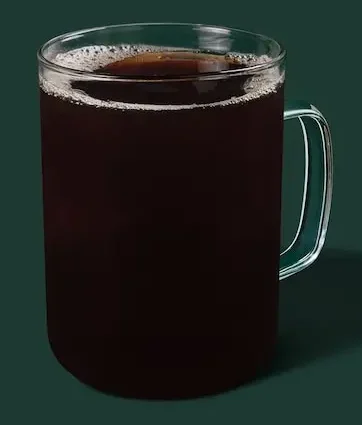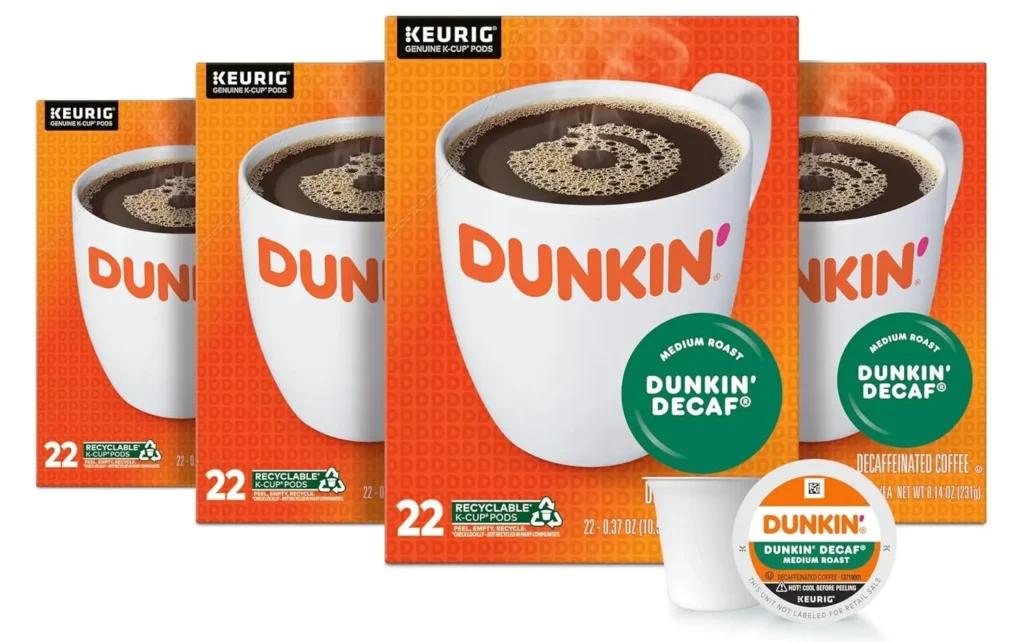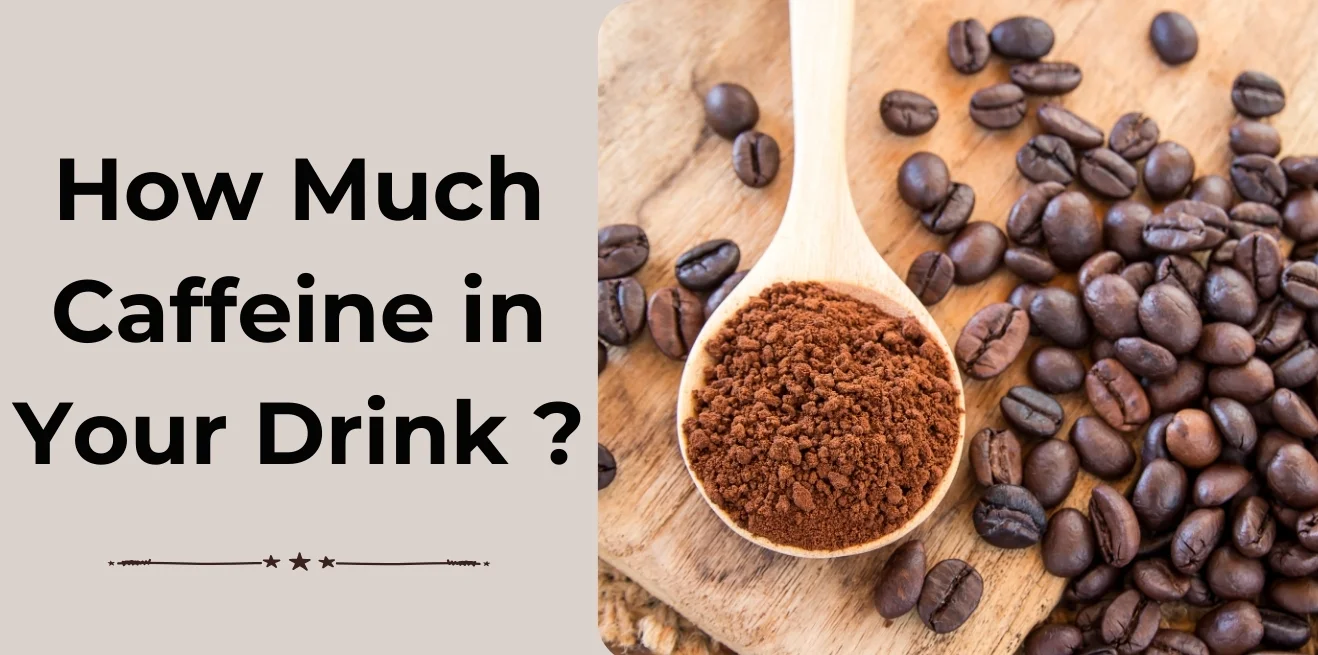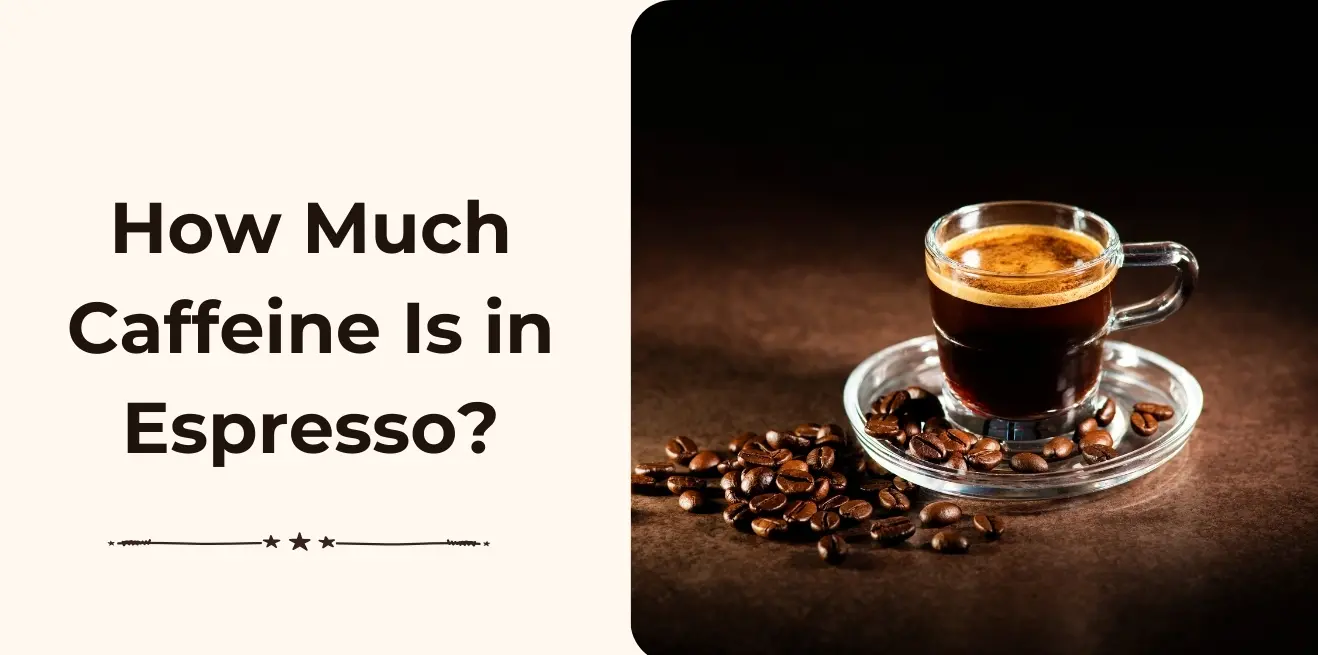Why Understanding Decaf Coffee Caffeine Content is Important
Many people believe that decaf coffee has no caffeine. This is a common misunderstanding. The truth is, decaf still contains a small amount of caffeine.
Why This Matters:
- Pregnancy: Doctors often advise pregnant people to limit caffeine. Even the small amount in decaf could add up if they drink it often.
- Caffeine Sensitivity: Some people feel shaky, anxious, or get headaches from even tiny amounts of caffeine. For them, knowing the truth about decaf is important.
- Health Conditions and Medication: Caffeine can affect how some medicines work. It can also raise heart rate or disturb sleep, especially for those with certain health problems.
Even though the caffeine in decaf is much lower than in regular coffee, it can still affect people who need to avoid caffeine completely. That’s why it’s important to know what you’re really drinking.
Does Decaf Coffee Contain Caffeine?
✅ Yes — decaf coffee still has a small amount of caffeine.
Many people are surprised to learn that decaf is not 100% caffeine-free. It still contains a small amount, usually about 2 to 5 milligrams of caffeine in an 8-ounce cup. In comparison, a regular cup of coffee has around 95 milligrams.
Why Does It Still Have Caffeine?
- The word “decaf” means that most of the caffeine has been removed, not all of it.
- By law in many countries, decaf coffee must have at least 97% of the caffeine removed.
- That means a tiny amount of caffeine still stays in the coffee.
What Affects the Caffeine Level?
The amount of caffeine in decaf coffee can change depending on a few things:
- The brand of coffee
- The type of beans used
- The roast level (light, medium, or dark)
- The decaffeination method
So, even if it’s labeled “decaf,” the caffeine amount can vary. It’s not always the same in every cup.
How Much Caffeine Is in Decaf Coffee? (By Type & Brand)
The amount of caffeine in decaf coffee can change based on how it’s made and which brand you choose. Here’s a quick look at how much caffeine is usually found in different types and popular brands of decaf coffee:
(i) Brewed Decaf Coffee
☕ 2–7 mg per 8 oz cup
This is the most common type of decaf. The caffeine amount can vary depending on the beans and brewing method.
(ii) Decaf Espresso
☕ 2–15 mg per shot
Even though espresso shots are small, the caffeine can still be higher than expected. The amount can vary a lot between brands and coffee shops.
(iii) Starbucks Decaf Pike Place
☕ 25 mg per 16 fl oz (Grande)
Starbucks decaf contains a bit more caffeine than other brands. Their 16 oz Pike Place decaf has more than double the caffeine of many other decafs.

(iv) Dunkin’ Decaf
☕ 7–10 mg per 10 oz
Dunkin’s decaf has a moderate amount of caffeine. It’s still low, but a little more than some other brewed decafs.

(v) McDonald’s Decaf
☕ 8–14 mg per 12 oz
McDonald’s decaf coffee can vary, but the caffeine amount is still far less than regular coffee.

(vi) Instant Decaf Coffee
☕ 1–5 mg per 8 oz
Instant decaf have the least caffeine. It’s a good choice for people who want to keep their caffeine intake as low as possible.
Ingredient Breakdown: Why There’s Still Caffeine in Decaf
Even though decaf coffee goes through a process to remove caffeine, a small amount still remains. Here’s why:
Coffee Beans
☕ All coffee beans, including Arabica, naturally contain caffeine.
Arabica beans are often used for decaf because they have less caffeine than Robusta beans, but they still aren’t caffeine-free.
Decaffeination Isn’t Perfect
🔄 The process removes about 97% of the caffeine, but not all of it.
No method can take out 100% of the caffeine. That’s why decaf still has a small amount left after processing.
You can Also Read: How Much Caffeine Is in Your Drink? The Ultimate 2025 Guide
Brewing Strength Affects Final Caffeine
💧 How strong you brew your coffee also matters.
If you use more coffee grounds or brew it longer, you might end up with more caffeine in your cup, even if it’s decaf.
No Added Ingredients
✅ There are no added caffeine ingredients in decaf.
The caffeine that remains in decaf comes naturally from the coffee beans, not from anything extra.
Decaf vs Regular Coffee: Caffeine Comparison
Decaf coffee has much less caffeine than regular coffee, but the amount can still vary depending on the type. Here’s a quick comparison:
| Coffee Type | Serving Size | Caffeine (mg) |
|---|---|---|
| Regular Drip Coffee | 8 oz | ~95 mg |
| Decaf Brewed | 8 oz | ~2–7 mg |
| Espresso (Regular) | 1 oz | ~63 mg |
| Decaf Espresso | 1 oz | ~2–15 mg |
| Cold Brew | 12 oz | ~150–250 mg |
| Instant Decaf | 8 oz | ~1–5 mg |
Key Takeaways:
- Regular coffee has the highest caffeine, especially cold brew.
- Decaf coffee has much less, but still contains some caffeine.
- Decaf espresso can vary the most, sometimes reaching up to 15 mg per shot.
- Instant decaf usually has the least caffeine, making it a good option for very low caffeine needs.
Is Decaf Coffee Really “Safe” for Everyone?
Decaf coffee is a safer choice than regular coffee, but it may not be the right option for everyone in every situation. Here’s how it affects different groups of people:
Pregnant & Breastfeeding Individuals
👶 Up to 200 mg of caffeine per day is generally considered safe.
Since decaf has only a small amount of caffeine, it’s usually fine. But it’s still important to track total daily caffeine, including from other sources like tea, soda, or chocolate.
People with Anxiety or Sleep Issues
😟 Even a small amount of caffeine can make symptoms worse.
Some people are very sensitive to caffeine. For them, even decaf might cause jitteriness, restlessness, or trouble sleeping. It’s best to test how your body reacts.
Children & Teens
🧒 Decaf is a better option than regular coffee, but caffeine intake should still be limited.
Kids and teens shouldn’t have much caffeine. If they want coffee, decaf is the safer choice, but it’s still smart to keep an eye on how much they drink.
People with Heart or Blood Pressure Concerns
❤️ Decaf is safer than regular coffee for those with heart or blood pressure issues.
Regular coffee can sometimes raise heart rate or blood pressure. Decaf has less effect, but it’s still good to check with a doctor if you have a health condition.
How Decaf Coffee Is Made (Decaffeination Methods)
Decaf coffee starts as regular coffee beans. Then, it goes through a process to remove most of the caffeine. There are a few different methods used:
1. Swiss Water Process
💧 Chemical-free and removes 99.9% of caffeine
This method uses only water, temperature, and time. It’s popular with people who want a natural option. It’s also known for being very gentle on the beans, keeping more of the original flavor.
2. CO₂ Process
🌬️ Uses carbon dioxide to remove caffeine
This method is clean and keeps most of the coffee’s flavor. It works well for large batches and is often used for high-quality decaf coffee.
3. Solvent-Based Process
🧪 Uses safe chemicals like ethyl acetate or methylene chloride
This is the most common method. It’s approved by the FDA and removes caffeine well. After the process, the solvents are completely removed before roasting.
4. Flavor Impact
😋 Some people say decaf tastes milder or slightly different from regular coffee.
Others may find it bland or flat, especially if the beans are low quality. However, good decaf made with care can still taste great.
Why Choose Decaf? Benefits Without the Effects
Decaf coffee lets you enjoy the taste and comfort of coffee without the strong effects of caffeine. Here are some reasons why people choose decaf:
Enjoy Coffee Flavor Without Jitters
☕ You can get the rich taste of coffee without feeling shaky or anxious. This is perfect for people who are sensitive to caffeine.
Drink It Late Without Affecting Sleep
Because it has very little caffeine, decaf is a good choice for the evening or nighttime. It’s less likely to keep you awake.
Pair with Desserts or Evening Meals
Decaf is great with desserts or after dinner. You can enjoy it without worrying about staying up all night.
Great for Pregnant People or Older People
Decaf is a safer option for pregnant people and older adults, who may need to limit caffeine for health reasons.
Low-Caffeine Coffee Alternatives
If you still want to cut back on caffeine but don’t want to switch fully to decaf, there are other good options:
Half-Caff Coffee
☕ A mix of regular and decaf beans.
It has about half the caffeine of regular coffee and still keeps a strong flavor.
Naturally Low-Caffeine Arabica Beans
🌱 Arabica beans naturally have less caffeine than Robusta. Choosing 100% Arabica can help reduce your caffeine intake.
Chicory Root or Herbal Coffee
🌿 These are caffeine-free drinks that taste similar to coffee. Chicory root is roasted and brewed like coffee, but has no caffeine.
Caffeine-Free Lattes (Golden Milk, Carob, etc.)
🥛 You can also try warm, cozy drinks like golden milk (with turmeric) or carob-based lattes. They feel like coffee, but without any caffeine.
How to Order or Brew Truly Low-Caffeine Decaf
If you want to make sure your decaf coffee has as little caffeine as possible, here are a few tips to help:
1. Ask for Swiss Water Decaf at Cafés
☕ Swiss Water Process removes 99.9% of caffeine and uses no chemicals.
When ordering at a café, ask if they offer this type. It’s one of the lowest-caffeine and cleanest options available.
2. Brew Weaker at Home
🏠 Use more water and fewer coffee grounds when making coffee at home.
This makes a weaker brew with less caffeine in each cup. It’s an easy way to lower caffeine without giving up coffee completely.
3. Double Check with Brands
🔍 Not all decaf is the same. Some brands have more caffeine than others, even if they’re labeled “decaf.”
Check the packaging or the company’s website to know how much caffeine is in their decaf coffee.
4. Try Instant Decaf
📦 Instant decaf usually has the least caffeine of all types.
It’s quick, easy, and a great choice if you’re looking for very low caffeine in your cup.
Conclusion: Is Decaf Really Caffeine-Free?
No — decaf is not completely caffeine-free, but it is very low in caffeine.
For most people, it’s a safe and healthy choice, even if they are trying to limit caffeine. However, it’s still important to be aware of:
- The brand and how much caffeine it contains
- The brewing method, which can affect caffeine levels
- Your own sensitivity to caffeine
Decaf lets you enjoy the taste and comfort of coffee without the strong energy boost or jitters. It’s a great option for late nights, quiet mornings, or any time you want a gentler coffee experience.
FAQs About Decaf Coffee
Q1: Is there any truly caffeine-free coffee?
Not exactly.
Even the best decaf methods leave behind a small amount of caffeine. If you want zero caffeine, try herbal coffee alternatives like chicory or caffeine-free lattes.
Q2: How many cups of decaf can I drink a day?
Most people can safely drink 3 to 5 cups of decaf a day.
Since it has very little caffeine, it’s unlikely to cause issues unless you’re very sensitive or drinking it alongside other sources of caffeine.
Q3: Can decaf coffee cause insomnia?
It’s not likely, but it can for some.
If you’re very sensitive to caffeine, even the small amount in decaf could affect your sleep. Try switching to herbal drinks in the evening if you notice any sleep problems.
Q4: Is decaf healthier than regular coffee?
It depends on your needs.
Decaf is better for people trying to avoid caffeine due to health concerns. But both decaf and regular coffee have antioxidants and similar health benefits.
Q5: What’s the safest decaf method?
The Swiss Water Process is the safest and most natural.
It’s chemical-free and removes 99.9% of caffeine, making it a good choice for those who want the cleanest decaf option.





